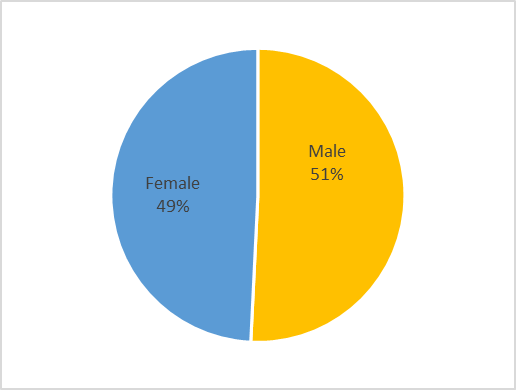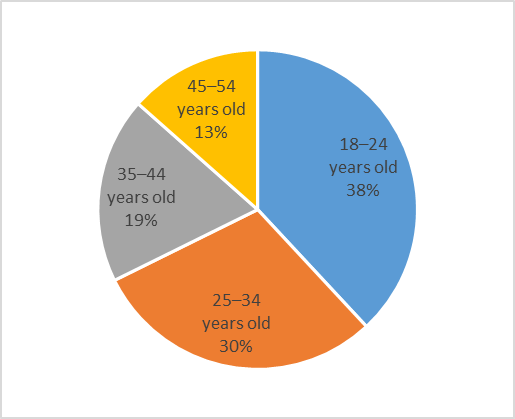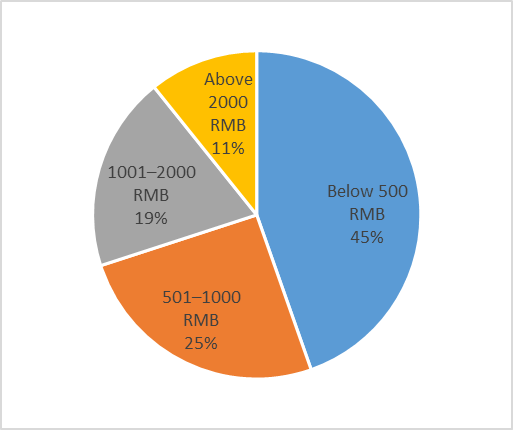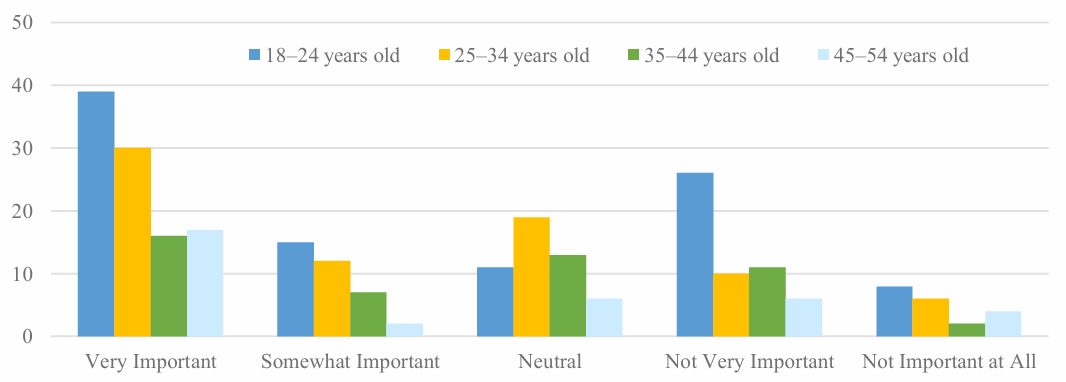1.Introduction
In recent years, as consumers have become increasingly focused on healthy diets and diverse foods, bakery products, commonly consumed in daily diets, have gradually gained popularity in the Chinese market. Among these, bagels, a type of baked food with unique taste and cultural background, have also attracted more attention. Bagels originated in Europe and North America, known for their chewy texture, rich flavors, and higher nutritional value. They have gradually become a favorite food among young urbanites and student groups. However, the popularity of bagels in the Chinese market remains relatively low, and the localization of product design and its alignment with market demand still require improvement [1].
Songjiang University Town is a region home to multiple universities, with students, faculty, and surrounding residents forming a unique consumer group. Their dietary needs are characterized by distinct diversity and individuality. In this context, studying the demand preferences and consumption behavior of consumers in Songjiang University Town regarding bagel products not only provides a scientific basis for local market development but also offers guidance for the localization design and promotion strategies of bagel products [2].
This study starts from the core needs of consumers and uses a questionnaire survey to explore preferences related to the taste, flavor, nutritional value, price acceptance, and purchasing habits of the target market regarding bagel products [3]. Moreover, by analyzing consumption scenarios and identity differences, the study proposes practical design and marketing suggestions for the market development of bagel products here [4].
2.Empirical Analysis
2.1.Data Collection
This survey selected 534 respondents from Songjiang University Town who frequently purchase bagels for a questionnaire survey. The survey was primarily distributed online, with a total of 534 questionnaires distributed. After excluding 14 responses with a completion time of less than 30 seconds, 520 valid questionnaires were recovered, yielding a valid response rate of 97.37%. The collected data volume is sufficient to reflect the market situation of bagel product design here and to provide valuable information for the marketing development of bagel products in the area.
2.2.Reliability and Validity Testing
2.2.1.Reliability Testing
The reliability of the questionnaire was assessed using Cronbach’s Alpha reliability test. If the value exceeds 0.8, the reliability is considered high; if it falls between 0.7 and 0.8, the reliability is deemed good; if it ranges between 0.6 and 0.7, the reliability is acceptable; and if it is below 0.6, the reliability is considered poor [5].
The Cronbach’s Alpha test results indicate that the questionnaire scale has a Cronbach’s α coefficient of 0.869, which is greater than 0.7, demonstrating that the data has high reliability and is suitable for further analysis [6].
2.2.2.Validity Testing
The validity of the questionnaire scale was tested using the Kaiser-Meyer-Olkin (KMO) measure and Bartlett’s test of sphericity. If the KMO value exceeds 0.8, the data is highly suitable for factor extraction and has excellent validity; if it falls between 0.7 and 0.8, the data is considered suitable for factor extraction with good validity [7].
The test results show that the KMO value is 0.824, which is greater than 0.6, and Bartlett’s test of sphericity yielded p<0.001, indicating the presence of correlations among variables, making them suitable for factor analysis.
2.3.Factor Analysis
According to the communalities in Table 1, the extracted factors (12 statements) have a variance explanation exceeding 0.5, indicating good commonality in the factor extraction process and a certain degree of explanatory power.
Table 1: Common Factor Variance
|
Initial |
Extraction |
|
|
I believe that the texture of bagels is fresh and soft, meeting my expectations. |
1.000 |
.777 |
|
I believe that the variety of bagel flavors is rich (such as sweet, savory, and healthy low-sugar options). |
1.000 |
.558 |
|
I believe that the ingredient combinations of bagels are nutritionally balanced, suitable for healthy dietary needs. |
1.000 |
.854 |
|
I believe that the purchasing channels for bagels are convenient and fast (such as in-store and delivery services). |
1.000 |
.769 |
|
I believe that the pricing of bagel products is reasonable and offers good value for money. |
1.000 |
.781 |
|
I believe that the packaging design of bagels is practical and appealing. |
1.000 |
.837 |
|
I am willing to regularly purchase bagels from the same brand. |
1.000 |
.724 |
|
I am willing to recommend bagel products to my classmates/friends. |
1.000 |
.786 |
|
Even if there are other options available, I would still prefer to purchase bagels from this brand. |
1.000 |
.719 |
|
I have a high level of trust in this brand of bagels. |
1.000 |
.711 |
|
I have a certain degree of dependence on the convenience and quality of bagel products. |
1.000 |
.736 |
|
Even if the price is slightly higher, I would still choose this brand of bagels. |
1.000 |
.832 |
Source: SPSS Statistical Analysis
The total variance explained in Table 2 shows that, based on the criterion of eigenvalues greater than 1, four factors should be extracted. The cumulative variance contribution rate of these four factors is 75.696%, meaning they account for 75.696% of the total information.
Table 2: Rotated Factorial ANOVA for the Scale
|
Component |
Initial Eigenvalues |
Extraction Sums of Squared Loadings |
Rotation Sums of Squared Loadings |
||||||
|
Total |
% of Variance |
Cumulative % |
Total |
% of Variance |
Cumulative % |
Total |
% of Variance |
Cumulative % |
|
|
1 |
4.973 |
41.440 |
41.440 |
4.973 |
41.440 |
41.440 |
2.362 |
19.683 |
19.683 |
|
2 |
1.511 |
12.590 |
54.030 |
1.511 |
12.590 |
54.030 |
2.306 |
19.218 |
38.901 |
|
3 |
1.315 |
10.959 |
64.990 |
1.315 |
10.959 |
64.990 |
2.230 |
18.586 |
57.488 |
|
4 |
1.285 |
10.706 |
75.696 |
1.285 |
10.706 |
75.696 |
2.185 |
18.209 |
75.696 |
|
5 |
.642 |
5.351 |
81.047 |
||||||
|
6 |
.498 |
4.148 |
85.195 |
||||||
|
7 |
.415 |
3.462 |
88.657 |
||||||
|
8 |
.368 |
3.066 |
91.724 |
||||||
|
9 |
.301 |
2.512 |
94.236 |
||||||
|
10 |
.257 |
2.138 |
96.374 |
||||||
|
11 |
.239 |
1.988 |
98.362 |
||||||
|
12 |
.197 |
1.638 |
100.000 |
||||||
Source: SPSS Statistical Analysis
According to the rotated factor matrix in Table 3, the factors influencing bagel product design can be more clearly interpreted. The rotated factor equation helps allocate variables into different factors, dividing them into four factors in total: Factor 1 explains the product design dimension; Factor 2 explains the consumer experience dimension; Factor 3 explains the brand loyalty dimension; Factor 4 explains the emotional loyalty dimension. These factors collectively influence consumer purchasing decisions and brand preferences from multiple perspectives, providing valuable insights to help bagel brands make more precise adjustments in product design and market strategies.
Table 3: Rotated Factorial Square Analysis of the Scale
|
Component |
||||
|
1 |
2 |
3 |
4 |
|
|
I believe that the texture of bagels is fresh and soft, meeting my expectations. |
.835 |
|||
|
I believe that the variety of bagel flavors is rich (such as sweet, savory, and healthy low-sugar options). |
.717 |
|||
|
I believe that the ingredient combinations of bagels are nutritionally balanced, suitable for healthy dietary needs. |
.878 |
|||
|
I believe that the purchasing channels for bagels are convenient and fast (such as in-store and delivery services). |
.824 |
|||
|
I believe that the pricing of bagel products is reasonable and offers good value for money. |
.820 |
|||
|
I believe that the packaging design of bagels is practical and appealing. |
.876 |
|||
|
I am willing to regularly purchase bagels from the same brand. |
.805 |
|||
|
I am willing to recommend bagel products to my classmates/friends. |
.852 |
|||
|
Even if there are other options available, I would still prefer to purchase bagels from this brand. |
.806 |
|||
|
I have a high level of trust in this brand of bagels. |
.777 |
|||
|
I have a certain degree of dependence on the convenience and quality of bagel products. |
.824 |
|||
|
Even if the price is slightly higher, I would still choose this brand of bagels. |
.871 |
|||
Source: SPSS Statistical Analysis
2.4.Consumer Demand Analysis
2.4.1.Basic Information of Respondents
As shown in Figure 1, the gender distribution of the sample is relatively balanced, with 50.8% male and 49.2% female. The respondents' ages are primarily concentrated in the 18-24 age group (38.1%) and the 25-34 age group (29.6%), accounting for a total of 67.7%, indicating that young consumers form the primary market for bagel products. Regarding occupation, the majority of respondents are students (56.2%), followed by faculty and staff (22.7%) and residents in surrounding areas (21.2%), highlighting that students in Songjiang University Town constitute the core consumer group for bagels. In terms of monthly consumption levels, 44.6% of respondents spend less than 500 RMB per month, 25.4% spend 501-1000 RMB, 19.2% spend 1001-2000 RMB, 10.8% spend over 2000 RMB. These findings suggest that bagel products primarily target consumers with medium to low spending power.
Overall, the sample characteristics indicate a young, student-dominated consumer base with relatively lower spending power and a balanced gender ratio. These attributes have significant implications for bagel product design and market positioning, especially in considering flavor preferences and price sensitivity among young consumers.




(a)Gender (b)Age (c)Identity (d)Monthly Consumption Level
Figure 1: Overview of Sample Demographic Characteristics
2.4.2.Group Differences in the Perceived Importance of Bagels in Diet
Figure 2 illustrates gender differences in consumers’ views on the importance of bagels in their daily diet [8]. Among male consumers, 55.9% consider bagels "very important," significantly higher than the 44.1% of female consumers. Conversely, in the "somewhat important" category, females accounted for 61.1%, compared to 38.9% of males. Additionally, more women than men regarded bagels as "completely unimportant" (60.0% vs. 40.0%). These findings indicate that male consumers tend to place greater importance on bagels in their daily diet, while female consumers exhibit a more diverse range of opinions.

Figure 2: Analysis of Differences in the Importance of Bagel Products in Daily Diet Among Different Gender Consumer Groups
Figure 3 shows that age groups also exhibit differences in their perception of bagels' importance [9]. The 18-24 age group demonstrates polarized opinions, with 38.2% considering bagels "very important" while 49.1% deem them "not very important." In contrast, the 25-34 age group maintains a more neutral stance, with 33.3% selecting "somewhat important" and 38.8% selecting "neutral." Consumers aged 35 and above show more conservative attitudes, with only 5.6% of the 45-54 age group considering bagels "somewhat important." These results indicate that younger consumers (18-24) have a higher level of acceptance and interest in new products, whereas middle-aged and older consumers (35+) tend to take a more cautious or neutral stance on bagels. Therefore, product design and marketing strategies should emphasize personalization and appeal for younger consumers, while for older consumers, focusing on health benefits, practicality, and affordability may better align with their preferences.
As depicted in Figure 4, different consumer groups vary in their support for premium or customized bagel options [10]. Students show the highest level of support, with 63.7% "fully supporting" such options, accounting for 56.2% of the total sample; Faculty and staff exhibit lower support, with only 24.2% "fully supporting" and 24.0% remaining neutral; Residents show moderate support, with 30.4% "supporting" the idea, while only 12.1% fully support it.
·

Figure 3: Analysis of Differences in the Importance of Bagel in Daily Diet Among Different Age Consumer Groups
This suggests that students have a stronger demand for premium and customized products, while faculty, staff, and local residents tend to be more conservative in their preferences. Consequently, bagel product design should prioritize students' need for personalization, while also offering practical and cost-effective options to appeal to other consumer groups, thereby capturing a diverse market.

Figure 4: Analysis of Differences in Support for Premium or Customized Options Among Different Age Consumer Groups
2.4.3.Group Differences in Brand Loyalty Toward Bagels
The ANOVA analysis in Table 4 [11] reveals no significant differences in bagel brand loyalty among consumers based on gender, age, occupation, or monthly spending level (Sig.> 0.05 for all factors) [12]. Specifically: Gender (F=0.575, Sig.=0.862); Age (F=0.890, Sig.=0.557); Occupation (F=1.695, Sig.=0.068); Monthly spending (F=1.437, Sig.=0.150) did not reach a statistically significant level, suggesting that these factors have no significant impact on brand loyalty.
The relatively small differences in brand loyalty across consumer groups imply that the bagel brand holds a balanced appeal among various consumer demographics, without displaying strong group-specific preferences. This broad market coverage indicates that the brand has widespread attractiveness and general applicability, effectively catering to a diverse consumer base. Given this wide-ranging appeal, the brand’s product positioning and marketing strategies are well-suited to meeting the fundamental needs of different consumer groups. Moving forward, the brand can further enhance brand loyalty by incorporating consumer-specific preferences into its marketing strategies, fostering deeper customer engagement, and ultimately boosting its market competitiveness.
Table 4: Analysis of Brand Loyalty for Bagel Products Among Different Consumer Groups
|
Sum of Squares |
df |
Mean Square |
F |
Sig. |
||||
|
1.Your gender: |
Between Groups |
(Combined) |
1.765 |
12 |
.147 |
.575 |
.862 |
|
|
Linear Term |
Weighted |
.429 |
1 |
.429 |
1.677 |
.197 |
||
|
Deviation |
1.336 |
11 |
.121 |
.475 |
.918 |
|||
|
Within Groups |
63.219 |
247 |
.256 |
|||||
|
Total |
64.985 |
259 |
||||||
|
2.Your age: |
Between Groups |
(Combined) |
11.878 |
12 |
.990 |
.890 |
.557 |
|
|
Linear Term |
Weighted |
1.165 |
1 |
1.165 |
1.048 |
.307 |
||
|
Deviation |
10.713 |
11 |
.974 |
.876 |
.564 |
|||
|
Within Groups |
274.584 |
247 |
1.112 |
|||||
|
Total |
286.462 |
259 |
||||||
|
3.Your identity: |
Between Groups |
(Combined) |
12.868 |
12 |
1.072 |
1.695 |
.068 |
|
|
Linear Term |
Weighted |
1.409 |
1 |
1.409 |
2.226 |
.137 |
||
|
Deviation |
11.459 |
11 |
1.042 |
1.646 |
.087 |
|||
|
Within Groups |
156.282 |
247 |
.633 |
|||||
|
Total |
169.150 |
259 |
||||||
|
4.Your monthly consumption level: |
Between Groups |
(Combined) |
18.113 |
12 |
1.509 |
1.437 |
.150 |
|
|
Linear Term |
Weighted |
.001 |
1 |
.001 |
.001 |
.973 |
||
|
Deviation |
18.111 |
11 |
1.646 |
1.567 |
.109 |
|||
|
Within Groups |
259.503 |
247 |
1.051 |
|||||
|
Total |
277.615 |
259 |
||||||
Source: SPSS Statistical Analysis
2.5.Key Factors Influencing Bagel Purchases
As shown in Table 5, the primary factors affecting consumers' bagel purchases include [13]: the limited variety of flavors emerged as the most significant factor influencing consumers' bagel purchases, accounting for 22.7%, with 67.6% of respondents selecting this option. The next most critical concerns were lack of balanced nutrition (20.5%) and high price (18.8%) [14], cited by 60.9% and 55.9% of respondents, respectively. Additionally, unappealing packaging or design was another notable issue, affecting 17.6% of consumers, with 52.3% selecting this factor. In contrast, concerns about inconvenient sales locations and hours (10.0%) and other miscellaneous factors (10.4%) had a relatively smaller impact, with 29.7% and 30.9% of respondents, respectively, considering them as key influencing factors. Overall, consumers prioritize the core attributes of bagel products, such as flavor, nutritional value, and price, while sales convenience and packaging aesthetics play a relatively minor role in their purchasing decisions.
Table 5: Main Factors Influencing Your Purchase of Bagel Products
|
Responses |
Percent of Cases |
|||
|
N |
Percent |
|||
|
The main factors influencing your purchase of bagel products are: |
Limited flavor options |
173 |
22.7% |
67.6% |
|
Higher prices |
143 |
18.8% |
55.9% |
|
|
Imbalanced nutrition |
156 |
20.5% |
60.9% |
|
|
Inconvenient sales time and location |
76 |
10.0% |
29.7% |
|
|
Unattractive packaging or appearance design |
134 |
17.6% |
52.3% |
|
|
Other |
79 |
10.4% |
30.9% |
|
Source: SPSS Statistical Analysis
3.Product Design
1. Flavor Design
To cater to the preferences of different consumer groups, three product lines are designed: Classic, Health-conscious, and Innovative. The Classic line includes traditional flavors such as original, sesame, and blueberry, targeting mass-market demand. The Health-conscious line incorporates whole wheat, low-fat, high-fiber, and sugar-free formulations to meet the needs of consumers who prioritize health and nutrition, particularly older individuals. The Innovative line is tailored to young consumers by introducing creative flavors like matcha red bean and cheese bacon, enhancing its appeal to the younger demographic.
2. Nutritional Balance Design
During product development, the nutritional formula is optimized to balance taste and health benefits. By increasing protein content—such as adding nuts or high-protein grains—the product enhances satiety and nutritional value [15]. Meanwhile, sugar and fat content are controlled, and a "Health Label" product line is introduced to help consumers easily identify healthier options.
3. Pricing and Packaging Design
In terms of pricing, a three-tier pricing strategy is implemented: an affordable price for the Classic line, a mid-to-high-end positioning for the Health-conscious line, and a customized pricing strategy for the Innovative line to meet the needs of different consumer groups [16]. Packaging design adopts eco-friendly materials, blending a minimalist and fresh aesthetic with clearly labeled nutritional information. Additionally, elements characteristic of Songjiang University Town are incorporated to enhance brand recognition.
4. Sales Channel Distribution
To improve purchasing convenience, offline and online sales channels are optimized [17]. Sales points are set up in high-traffic areas within the university town, such as cafeterias, libraries, and convenience stores, enabling students to make purchases easily. Meanwhile, an online pre-order service supported by WeChat public accounts and mini-programs is launched, allowing consumers to pick up their orders during designated time slots. Moreover, exclusive student promotions, such as membership discounts and points-based redemption, are introduced to encourage repeat purchases.
5. Premium and Customized Services
To meet personalized demands, a small-scale private customization service is launched, allowing consumers to choose flavors, shapes, and packaging based on their preferences [18]. Limited-edition or gift-boxed bagels are introduced for holidays or campus events, further reinforcing the brand’s premium positioning.
By implementing the above design strategies, the bagel product can effectively meet consumers’ core demands for flavor, nutrition, and pricing while also addressing convenience and packaging attractiveness. These efforts are expected to enhance brand market share and consumer recognition within Songjiang University Town.
4.Conclusion
This study focuses on consumers in Songjiang University Town, conducting a systematic investigation into bagel product design. By comprehensively analyzing consumers’ demographic characteristics, purchasing behavior, and key factors influencing buying decisions, the study provides a scientific basis for optimizing bagel product design and marketing strategies.
The findings reveal a diverse distribution of consumers in terms of gender, age, occupation, and monthly spending levels, with significant differences in how different groups perceive the importance of bagels in their daily diet. For instance, male consumers are more likely than female consumers to consider bagels "very important," whereas a higher proportion of female consumers rate them as "moderately important" or "not important at all." Additionally, consumer priorities vary by age group—young consumers aged 18–24 tend to focus more on convenience and visual appeal, while older consumers place greater emphasis on nutritional value and pricing.
Regarding brand loyalty, the study finds that gender and age have minimal impact, whereas occupation (e.g., university students, faculty and staff, or local residents) and monthly spending levels have a more significant influence. This highlights the importance of tailoring product offerings and promotional strategies to different consumer segments based on their occupation and purchasing power.
A detailed analysis of the main factors influencing consumers’ purchasing decisions shows that the top three barriers to buying bagels are "limited flavor options" (22.7%), "insufficient nutritional balance" (20.5%), and "high price" (18.8%). Additionally, "inconvenient sales locations and hours" and "unattractive packaging or design" also impact consumer choices. Based on these findings, future product development will focus on expanding flavor variety, enhancing nutritional balance, and optimizing pricing strategies. Moreover, improvements in sales channel distribution and packaging design will prioritize consumer experience. Furthermore, market promotion strategies should be customized to address the distinct needs of university students, faculty and staff, and local residents to enhance brand competitiveness and market share.
References
[1]. He, S. Y. (2012). A study on the marketing strategies of domestic bakery food businesses. Business Manager, 2012(5), 141-142.
[2]. Zhang, J. (2016). Marketing strategy formulation for AL Bakery Company (Master's thesis, Northeastern University). Shenyang: Northeastern University.
[3]. Shang, M. (2010). The year-to-year similarity and the different mooncakes: An analysis of effective marketing in the 2010 mooncake market. Food Development, 2010(4), 13-15.
[4]. Hong, J. (2014). Bakery bread leading the trend of high-fiber products. Food Development, 2014(3), 24.
[5]. Liu, C. X. (2004). Development trends in baked and health foods. Popular Business: Entrepreneurship Edition, 2004(4), 56.
[6]. Xu, X. (2015). Research on the unique visual identity and product promotion design for bakery (Master's thesis, Henan University). Zhengzhou: Henan University.
[7]. Qin, D. G. (2012). Three main business models currently existing in the bakery industry. Food Development, 2012(5), 23-24.
[8]. Zhang, S. W. (2000). Forecasting the domestic and international bakery food markets and the industry development trends. Grain and Feed Industry, 2000(2), 38-39.
[9]. Yang, Y. N. (2012). A SWOT analysis-based discussion on the marketing strategies of bakery food enterprises in Hong Kong and Macau: A case study of Guangdong Province. Enterprise Research: Theory Edition, 2012(7), 33-34.
[10]. Seva R R, Duh H B L, Helander M G. The marketing implications of affective product design[J]. Applied Ergonomics, 2007, 38(6): 723-731.
[11]. Veryzer R W. The roles of marketing and industrial design in discontinuous new product development[J]. Journal of Product Innovation Management, 2005, 22(1): 22-41.
[12]. Michalek J J, Feinberg F M, Papalambros P Y. Linking marketing and engineering product design decisions via analytical target cascading[J]. Journal of product innovation management, 2005, 22(1): 42-62.
[13]. Ljungberg L Y, Edwards K L. Design, materials selection and marketing of successful products[J]. Materials & design, 2003, 24(7): 519-529.
[14]. Luo L. Product line design for consumer durables: an integrated marketing and engineering approach[J]. Journal of Marketing Research, 2011, 48(1): 128-139.
[15]. Zhang D, Hu P, Kotabe M. Marketing–industrial design integration in new product development: The case of China[J]. Journal of Product Innovation Management, 2011, 28(3): 360-373.
[16]. Mada D, Soubra B. Design and marketing of financial products[J]. The Review of Financial Studies, 1991, 4(2): 361-384.
[17]. Sewall M A. Market segmentation based on consumer ratings of proposed product designs[J]. Journal of marketing research, 1978, 15(4): 557-564.
[18]. Kumar D, Chen W, Simpson T W. A market-driven approach to product family design[J]. International Journal of Production Research, 2009, 47(1): 71-104.
Cite this article
Li,K. (2025). Bagel Product Design Driven by Consumer Demand in Songjiang University Town. Advances in Economics, Management and Political Sciences,172,31-40.
Data availability
The datasets used and/or analyzed during the current study will be available from the authors upon reasonable request.
Disclaimer/Publisher's Note
The statements, opinions and data contained in all publications are solely those of the individual author(s) and contributor(s) and not of EWA Publishing and/or the editor(s). EWA Publishing and/or the editor(s) disclaim responsibility for any injury to people or property resulting from any ideas, methods, instructions or products referred to in the content.
About volume
Volume title: Proceedings of the 4th International Conference on Business and Policy Studies
© 2024 by the author(s). Licensee EWA Publishing, Oxford, UK. This article is an open access article distributed under the terms and
conditions of the Creative Commons Attribution (CC BY) license. Authors who
publish this series agree to the following terms:
1. Authors retain copyright and grant the series right of first publication with the work simultaneously licensed under a Creative Commons
Attribution License that allows others to share the work with an acknowledgment of the work's authorship and initial publication in this
series.
2. Authors are able to enter into separate, additional contractual arrangements for the non-exclusive distribution of the series's published
version of the work (e.g., post it to an institutional repository or publish it in a book), with an acknowledgment of its initial
publication in this series.
3. Authors are permitted and encouraged to post their work online (e.g., in institutional repositories or on their website) prior to and
during the submission process, as it can lead to productive exchanges, as well as earlier and greater citation of published work (See
Open access policy for details).
References
[1]. He, S. Y. (2012). A study on the marketing strategies of domestic bakery food businesses. Business Manager, 2012(5), 141-142.
[2]. Zhang, J. (2016). Marketing strategy formulation for AL Bakery Company (Master's thesis, Northeastern University). Shenyang: Northeastern University.
[3]. Shang, M. (2010). The year-to-year similarity and the different mooncakes: An analysis of effective marketing in the 2010 mooncake market. Food Development, 2010(4), 13-15.
[4]. Hong, J. (2014). Bakery bread leading the trend of high-fiber products. Food Development, 2014(3), 24.
[5]. Liu, C. X. (2004). Development trends in baked and health foods. Popular Business: Entrepreneurship Edition, 2004(4), 56.
[6]. Xu, X. (2015). Research on the unique visual identity and product promotion design for bakery (Master's thesis, Henan University). Zhengzhou: Henan University.
[7]. Qin, D. G. (2012). Three main business models currently existing in the bakery industry. Food Development, 2012(5), 23-24.
[8]. Zhang, S. W. (2000). Forecasting the domestic and international bakery food markets and the industry development trends. Grain and Feed Industry, 2000(2), 38-39.
[9]. Yang, Y. N. (2012). A SWOT analysis-based discussion on the marketing strategies of bakery food enterprises in Hong Kong and Macau: A case study of Guangdong Province. Enterprise Research: Theory Edition, 2012(7), 33-34.
[10]. Seva R R, Duh H B L, Helander M G. The marketing implications of affective product design[J]. Applied Ergonomics, 2007, 38(6): 723-731.
[11]. Veryzer R W. The roles of marketing and industrial design in discontinuous new product development[J]. Journal of Product Innovation Management, 2005, 22(1): 22-41.
[12]. Michalek J J, Feinberg F M, Papalambros P Y. Linking marketing and engineering product design decisions via analytical target cascading[J]. Journal of product innovation management, 2005, 22(1): 42-62.
[13]. Ljungberg L Y, Edwards K L. Design, materials selection and marketing of successful products[J]. Materials & design, 2003, 24(7): 519-529.
[14]. Luo L. Product line design for consumer durables: an integrated marketing and engineering approach[J]. Journal of Marketing Research, 2011, 48(1): 128-139.
[15]. Zhang D, Hu P, Kotabe M. Marketing–industrial design integration in new product development: The case of China[J]. Journal of Product Innovation Management, 2011, 28(3): 360-373.
[16]. Mada D, Soubra B. Design and marketing of financial products[J]. The Review of Financial Studies, 1991, 4(2): 361-384.
[17]. Sewall M A. Market segmentation based on consumer ratings of proposed product designs[J]. Journal of marketing research, 1978, 15(4): 557-564.
[18]. Kumar D, Chen W, Simpson T W. A market-driven approach to product family design[J]. International Journal of Production Research, 2009, 47(1): 71-104.









